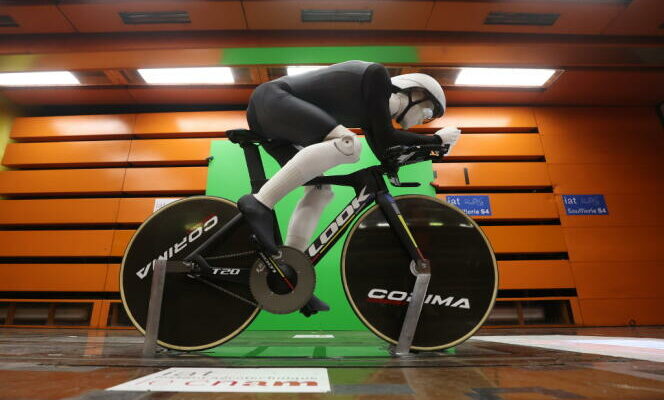Tomorrow’s Olympic gold medals may be won with a boost from physics. To show that science is the ally of athletes and their performances, the French Cycling Federation invited the press on January 31, to reveal the secrets of its riders, during training of the cycling team. France women on track, in the center of the velodrome of Saint-Quentin-en-Yvelines, and in the middle of the neighboring wind tunnel of the National Conservatory of Arts and Crafts (Saint-Cyr-l’Ecole).
The results presented are the result of several collaborations between the federation and research laboratories, mainly financed by the third future investment program, of 20 million euros between 2019 and 2024, which supported eleven projects and a dozen of sports federations (rowing, boxing, swimming, rugby, sailing, etc.).
“Things are already mature and are used or will be used”warns Emmanuel Brunet, research & performance manager of the federation. “The goal is to seek perfection. We don’t know if science will always succeed, but we know that the successful teams around the world are doing scientific research.”complete Christophe Clanetresearch director at CNRS and head of one of the programs.
Chain, tires, outfit…
So every detail counts to gain a little second here, a few watts of power there, or even a few centimeters. From the lubricant applied to the chain to limit friction and increase performance, through to the tires which must rub as little as possible, but not puncture too quickly. Right down to the fabric chosen for the outfit of track cyclists or road time trials. After wind tunnel tests, it was concluded that the best recipe is to use a different material for the arms or thighs, in order to limit the drag against which the runner can devote 90% of his power at high speed.
Another innovation has made it possible to flood trainers with information: a box from the start-up Phyling is quickly placed on the crank of a crankset to measure power in real time, during training or racing. And this two hundred times per second, compared to one or two times with previous models. Enough to be able to distinguish the power of the legs in pushing or pulling. This information feeds biomechanists, physiologists or physicists to determine the ability of athletes to produce a certain power, depending on pedaling frequency, speed, fatigue, etc.
You have 60% of this article left to read. The rest is reserved for subscribers.
